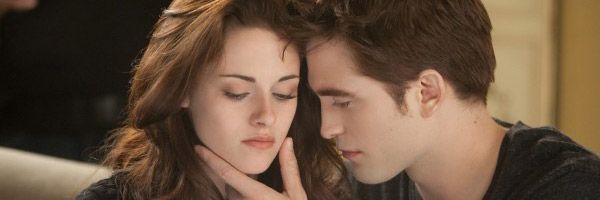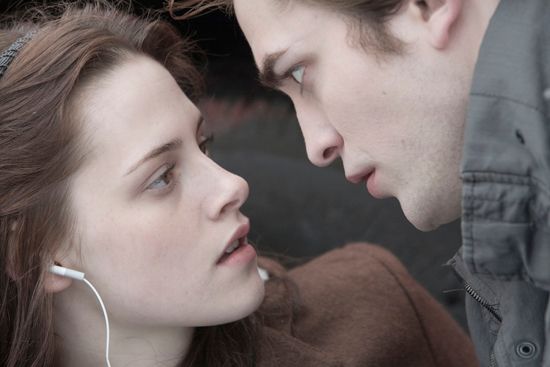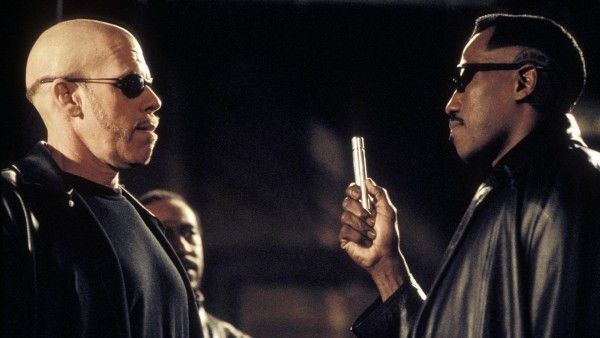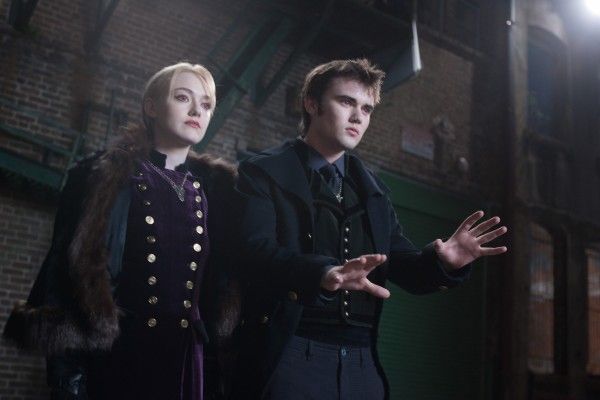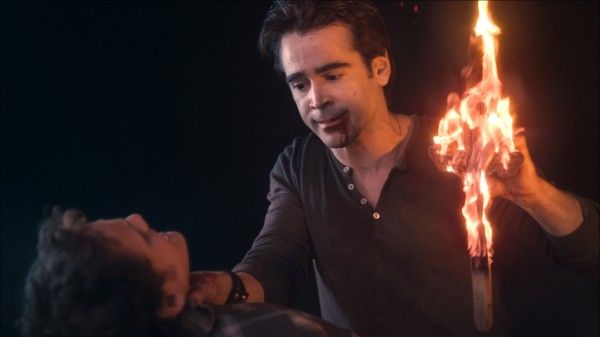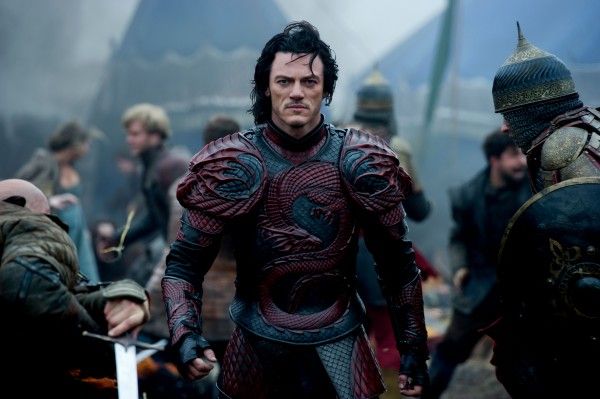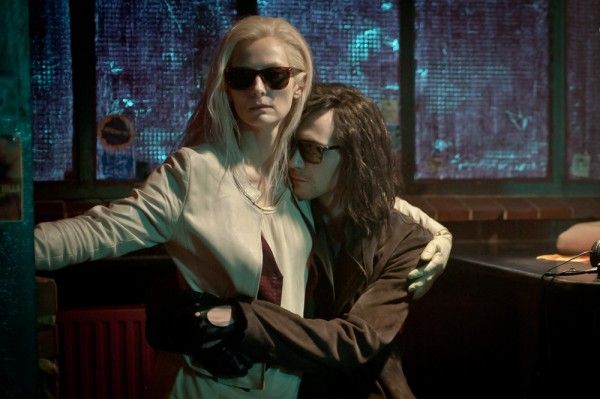Where have all the vampires gone? The bloodsucking monsters have popped up on celluloid for as long as man has been making movies. They're a staple of the horror genre, and despite their strong roots Bram Stoker's definitive Dracula, they posses the quality of any great horror mythology – the ability to evolve and adapt; the tropes of the subgenre taking on a fluid quality that allows it to survive decade after decade, tailored to the cultural fears and desires of a society at any moment. Unless, it seems, that moment is right now.
Despite their lasting thrall over audiences, vampires have all but disappeared from the filmmaking medium in the last few years, and indeed, as 2015 draws to a close, it seems this will be the first year in a long, long time without a single damn major vampire movie. (Unless you count the indie comedy What We Do in the Shadows, but that movie only hit stateside in 2015, debuting in the UK and its home country New Zealand last year). It's not that there's a lack of desire for the genre at all – vampires are currently thriving on television with shows like The Strain, American Horror Story: Hotel, The Vampire Diaries, and its spin off series The Originals. Why then, have the ghouls all but disappeared from the realm of cinema? Horror fads come and go, zombies are all the rage at the moment, and undoubtedly that mantle will be handed off in short order, but such a marked absence demands an explanation.
Who killed the vampire film? I'm afraid that dubious honor lies with Stephenie Meyer and her pasty pale clan of gorgeous, chaste, and excruciatingly boring vamps in The Twilight Saga. More on that in a bit, but first, a little history.
Vampire movies went mainstream in the movies with 1922's Nosferatu. Universal's classic Bela Lugosi-led Dracula brought the mythology to an even bigger audience in 1931, and then the U.K. Hammer studio took things to the next level when they kicked off their Dracula cycle in 1958 with Horror of Dracula; a lurid, technicolor-drenched romp that introduced buxom brides and a seduction factor to the previously monstrous creatures. And so it remained through the 1970s, as vampire films became a mainstay of horror filmmaking, almost all of them evoking Dracula -- either in name, mythology, or romantic gothic structure. In the 70s, the subgenre expanded with revisionist slants on the well-trod material; there was blaxploitation (Blacula), the invasion of vampirism on small town suburbia (Martin, Salem's Lot), and an explosion of the lesbian vampire trope (Daughters of Darkness, Vampyres, Twins of Evil, Vampyros Lesbos). But these still had deep structural and narrative roots in Bram Stoker's lore.
Then came the 1980s, and that revisionism went full-bent, all but abandoning the Dracula mythos. Tobe Hooper's Lifeforce got real weird with it, merging vampires and science fiction. Tony Scott's The Hunger made vampires unfathomably stylish with the trifecta of David Bowie, Catherine Deneuve and Susan Sarandon. By and large, vampires took a path toward the domestic, the mundane, and the modern – they became your next door neighbor (Fright Night), the outlaw girl you fell in love with (Near Dark), your best friend (My Best Friend is a Vampire) or the gang of punk rock "cool kids" you wanted to impress (The Lost Boys). Vampires moved into the realm of the living, rather than the other way around, but they still had their bite. They became familiar, but they were still dangerous.
The '90s were a bit of a scattershot. Vampires could be funny (Dracula: Dead and Loving It, A Vampire in Brooklyn, Buffy the Vampire Slayer), they could be seductive (Embrace of the Vampire) and they could be sympathetic (Innocent Blood, Nadja), but by and large they became monstrous again. From Dusk til Dawn, Blade, Vampires, and Bram Stoker's Dracula all depicted vampires as fearsome demons to be hunted and destroyed.
And then there was Interview with the Vampire, Neil Jordan's adaptation of Anne Rice's game-changing novel that combined all of these qualities into a new vision of vampirism that was only as alluring as it was horrific. With heartthrobs Tom Cruise, Brad Pitt and Antonio Banderas embodying the blood-thirsty undead on screen, vampires became tortured, philosophical objects of romance that would kill you just as soon as they would kiss you. It set a new precedent for the genre, and unfortunately it spawned the brooding, romantic vampire archetype that would lead to Edward Cullen and his family of vegetarian bores.
Before the Cullen gang sucked the life out of the genre, the first decade of the 21st century was ruled by vamps with a decidedly action-oriented bent. The Underworld and Blade franchises dominated the scene while less successful entries like would-be Interview with the Vampire followup Queen of the Damned and Van Helsing faded away in the background. From I am Legend to Timur Bekmambetov's Night Watch and Day Watch to Uwe Boll's god-awful BloodRayne, vampires were either kicking ass or getting their asses kicked, but they were thriving inside of an action-oriented context.
Then it happened. The dreaded T-word. The franchises of unforgivable wigs, paper thin protagonists, and the sparkling undead: Twilight. Thanks for nothing Twilight. Actually, Robert Pattinson is pretty cool, so thanks for making him a thing, but otherwise...woof. That's not to say there's not a single entertaining part of the franchise...there are, but in the campy, unintentional way. For example, the first film features a family of vampires playing baseball and donning jerseys, caps...the whole nine yards. For real, that's a thing that happened. It's hilarious. The final movie made Michael Sheen, an actually excellent actor, do this. Again, hilarious. But mostly unintentional humor aside (I'm inclined to believe director Bill Condon knew exactly what he was doing with Breaking Dawn – Part 2 and treated the final installment with all the respect a high school senior treats the last days of classes), the Twilight movies were a drag, and a drag that reached far beyond this individual franchise.
The Twilight Saga has been ripped apart in every possible way since the franchise debuted in 2008, so I'll condense my criticisms. Suffice it to say, the films none-too-subtly preach the Meyer's conservative, priggish belief system; glorify a wildly manipulative and abusive relationship; sap all the zeal and danger out of vampirism; and reduce the vampires themselves to cuddly objects of puritanical longing. They are the dullest, tamest, and hell, lamest incarnation of vampires to hit screens...and the movies were absolutely massive. Individually, the Twilight films are the five highest-grossing vampire films of all time. Collectively, they earned more than $3.3 billions worldwide from the box office alone. We have no idea how much more it made from merchandise, home video sales, etc.
But here's the thing: that massive fortune had no trickle-down effect with the genre it claimed to represent. Every studio attempt to capitalize on the vampire craze in the wake of Twilight's 2008 debut resulted in a box office bomb regardless of the film’s quality. Daybreakers in 2009, Let Me In in 2010, Fright Night in 2011, Dark Shadows and Abraham Lincoln: Vampire Hunter in 2012 all disappointed, and in what appears to have been the final nail in the coffin, last year's Dracula Untold and Vampire Academy tanked (domestically, at least, Dracula Untold did pretty well in the international market). This worked as a doubly damning factor on the vampire film. Vampire fans and Twilight fans aren't one in the same. Just because the feverish Twilight audience bombarded the theaters doesn't mean the general audience was hungry for vampires, and indeed, because Twilight became so ubiquitous and dominant in the cultural conversation of vampire fiction, audiences began to shy away from the genre all together.
Here's the crazy thing: November 16th will mark three years since the final installment in the franchise, Breaking Dawn – Part 2, hit theaters in one last fortune-making frenzy for the hormone-driven franchise that devoured all public interest in the vampire genre. And at only three years old, Twilight already feels like a cultural relic. Aside from the diehards, who even thinks about Twilight anymore? When was the last time it was relevant to anything?
In one of the most blatant cash grabs and feeble attempts at relevance, Meyer released a gender-swapped version of the Twilight earlier this year...and people cared for a day at the most. There was some head-scratching and raised eyebrows on the day of release, it trended on twitter for a few, but that was it. Nobody gave it a second glance. Nobody cared. Even the fans of the original didn't like it. Twilight has gone from mega franchise to passe problem in three short years, but the cultural ban on vampires is in full effect.
So does that mean vampires are gone for good? Hell no. Vampires are immortal not only in design, but in appeal. The lure of eternal life, the allegory of desire and sexuality, the fantasy of strength and power -- these qualities will always have an appeal. For now, vampires are relegated to television and the realm of artsy or independent film. Last year was quite good in that regard, giving us the hilarious What We Do in the Shadows, the idiosyncratic A Girl Walks Home Alone at Night, and the gorgeous Only Lovers Left Alive. It will probably take some time for studios to recover from the series of burns and miscalculations, but one day when the odiousness of the Twilight years has faded from memory, vampire movies will rise again, like they always have. Twilight may have put a stake in the heart of the vampire film, but one day someone will have the guts to pull it out.

